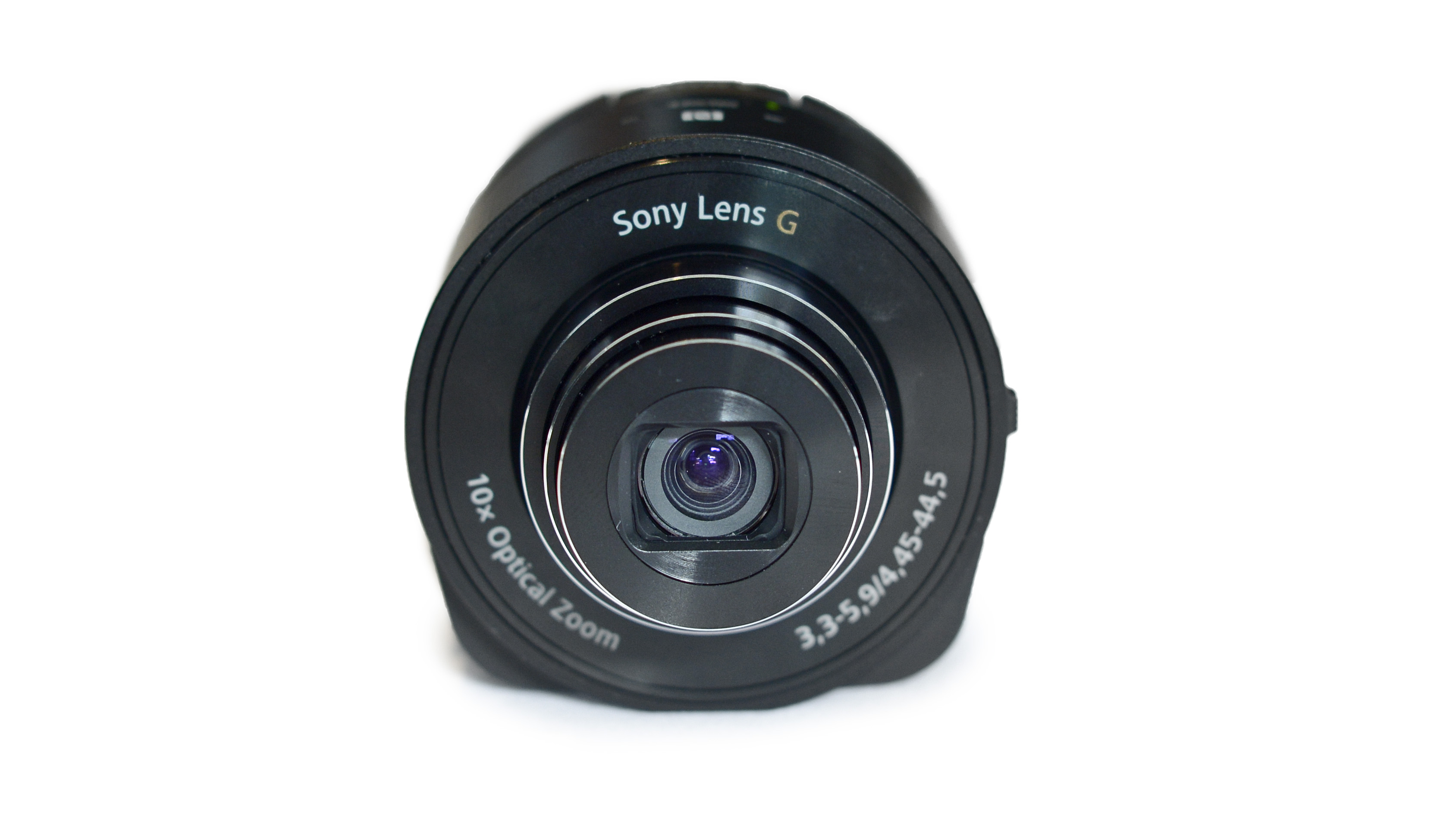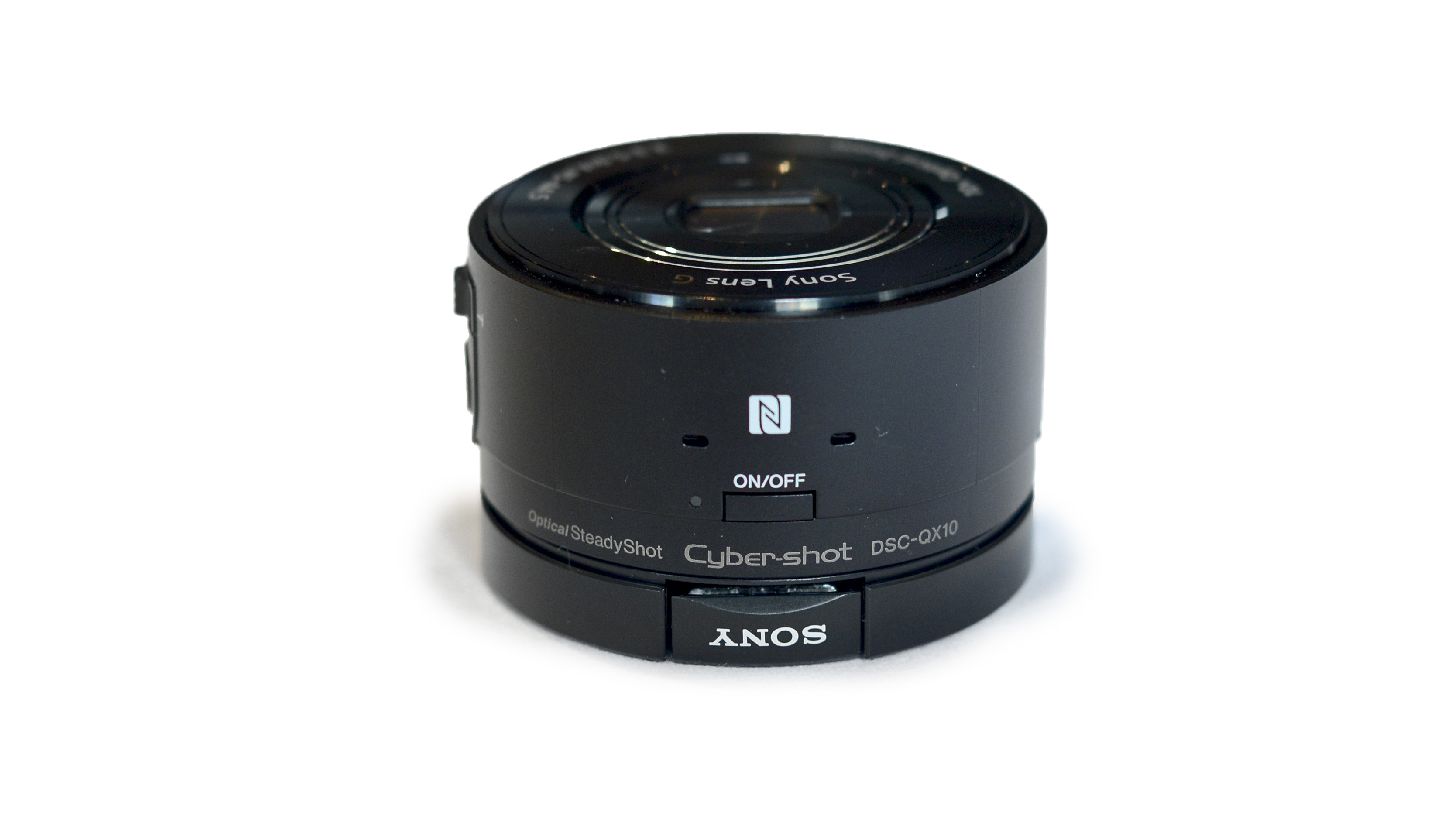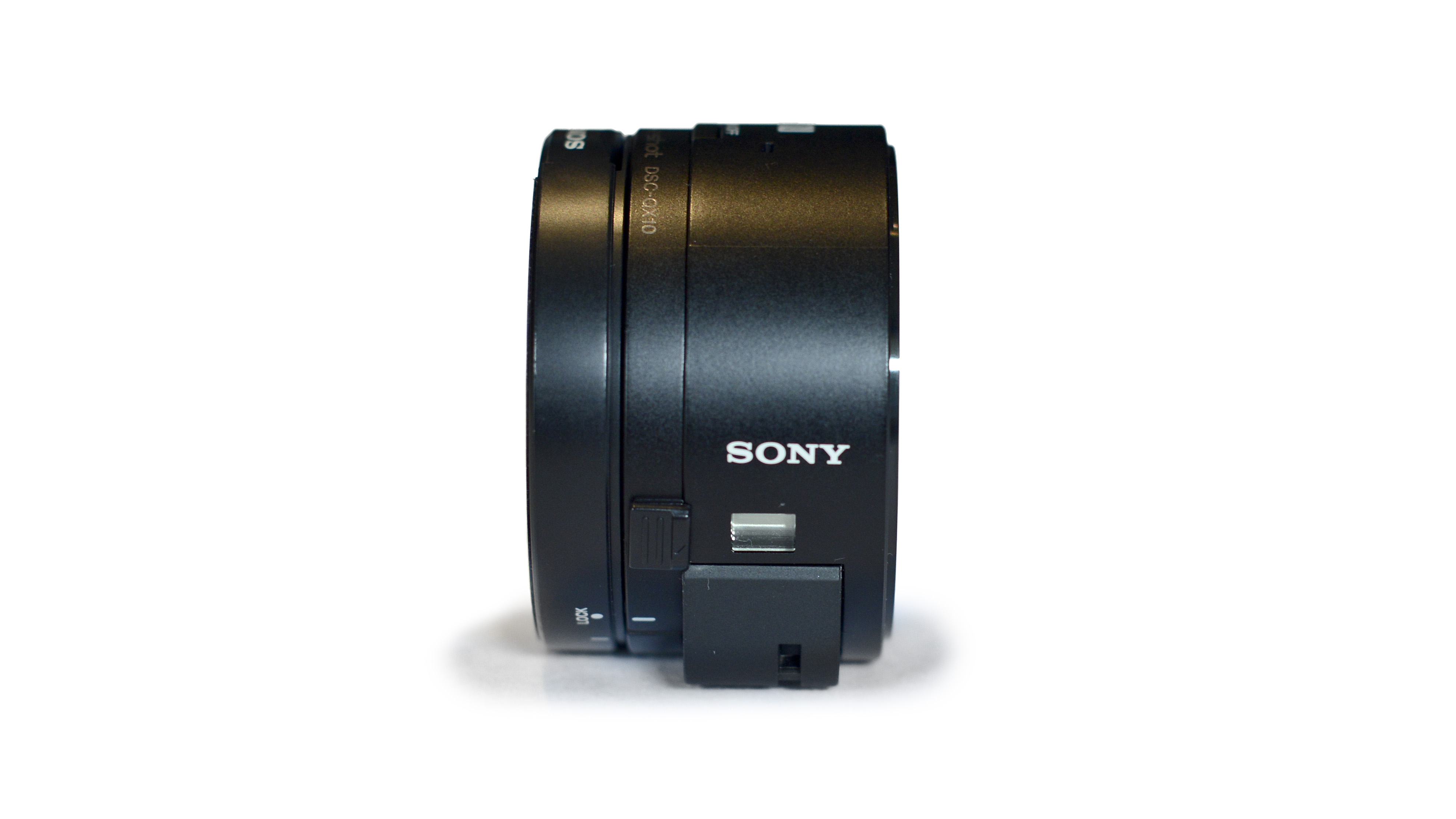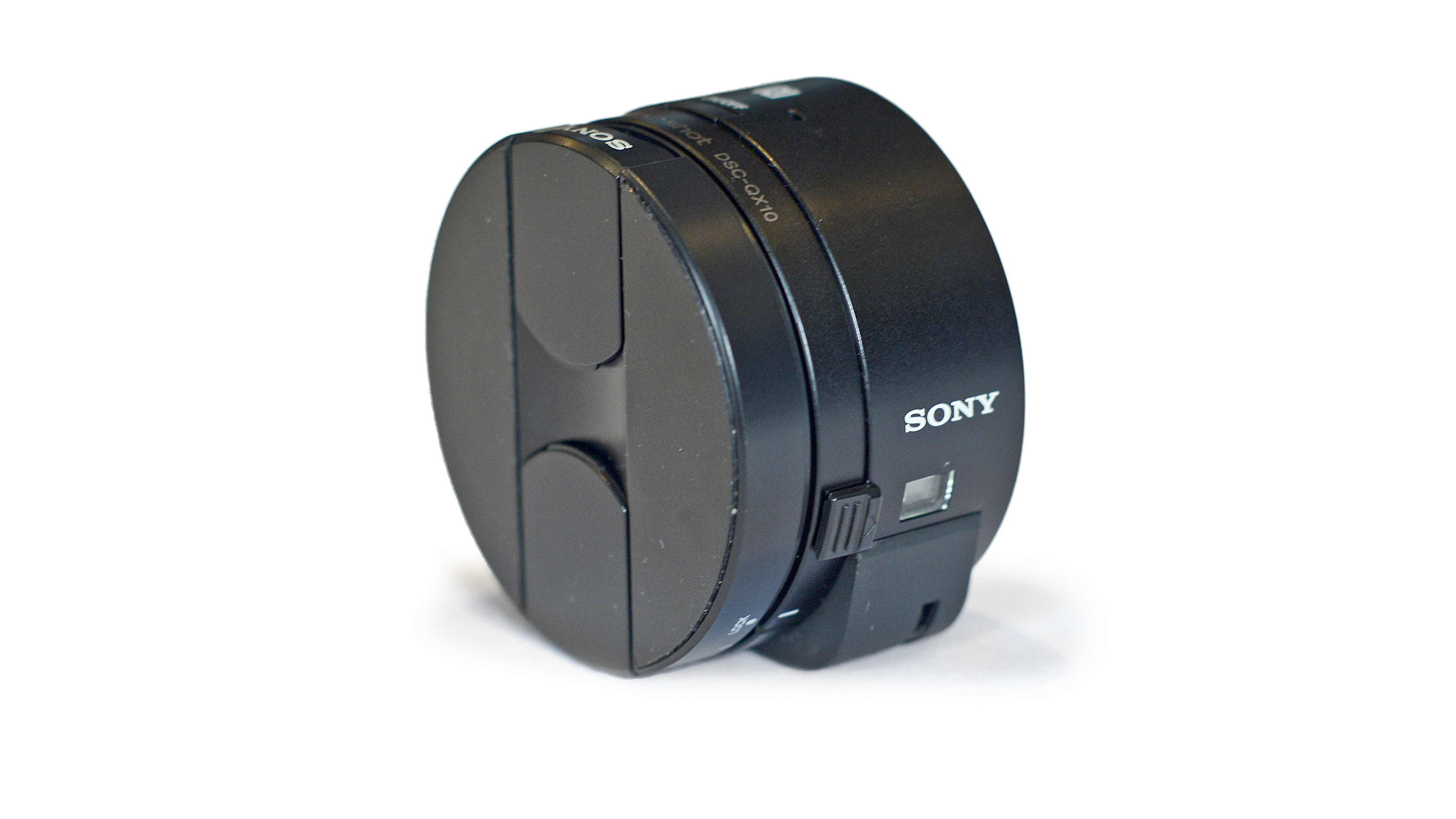Why you can trust TechRadar
As the smaller of the two new cameras, the QX10 is more pocket friendly than the QX100. If you attach it to your smartphone, you're unlikely to be able to get it in a jeans pocket, but as a separate device it shouldn't add too much bulk to your luggage.
At first glance, both cameras look like small interchangeable lenses. The QX10 is circular, rather than the rectangular shape we're familiar with for compact cameras. When powered on, the lens protrudes quite far from the body, but when off, the device is much more slimline.

You'll find hardly any physical buttons on the QX10, since most of the operation is carried out using the connected device. There's an on-off switch, a zoom lever and shutter release button. These buttons have virtual equivalents you can use on the PlayMemories app - so for instance, you can use the app to fire off the shutter release if you prefer, or use the button if you want to hold the camera in a traditional manner.
Although there's no LCD screen for composing, a very small display indicates remaining battery life. Other than that, you'll need to rely pretty much entirely on the PlayMemories app for shooting images and changing settings, such as exposure compensation or aperture.
Anybody who wants to use physical buttons - quite simply, this is not the device for you. Once you've paired the camera with your device, it's akin to using a camera entirely with a touchscreen.
The QX10 has a 10x optical zoom, which can be activated through the touchscreen, or controlled using a switch on the side of the lens. This is helpful if you're using the camera at a distance from the screen - or of course you just prefer a physical switch. Zooming seems to be fairly quick and fluid, and the 10x optical zoom of course surpasses the digital option you'll find on the typical smartphone.
There are limited options via the app, which is a shame. Even shooting on Program Auto, all you can change is white balance and exposure compensation. Ideally we'd have liked to have seen even more control here, but given that the QX10 is based on a simple point and shoot, it's perhaps not wholly surprising. We'd also like to see some more creative options available via the app, such as digital filters and so on.

As it stands, you can't use the QX10 with other apps, such as Instagram, but Camera 360 has already announced that it will make its app compatible with the device, so hopefully others will follow in the same vein to make the device truly integrated and even more useful.
If you've been using the QX10 without a tablet/smartphone screen, so long as you have a Micro SD card in the camera it will continue to record. If you shoot independently, you can retrieve the images shot via the app fairly easily, and it can be a fun way to shoot, though of course you will rely entirely on guesswork. There's no way to record video without connecting it to a smartphone or tablet though.
A problem with using the app in conjunction with the attachment mechanism presents itself when you want to shoot a landscape image. Turning the phone around with the camera attached makes the preview window turn on its head – it's not a problem when turning the camera independently away from the phone, but it's a little frustrating when it is attached. There seems to be no way to stop the preview window turning from the app menu, either.
Connecting the camera is fairly easy, especially if you have an NFC device – you'll simply need to tap the camera to the NFC area on your device and it should automatically register the QX10's presence and launch the PlayMemories app. Connecting via Wi-Fi is a little more laborious, but once you've set it up and the device is remembered it's not too tricky. It's a shame that the Wi-Fi setting can't be triggered directly from the app though, meaning that you need to enter into your device's settings area to connect, then go back into the PlayMemories app. It's also worth noting that the password for the QX10 can be found on both the instruction manual in the box, and printed on a sticker on the back of the battery compartment door.

A spring loaded mechanism on the back of the QX10 can be attached if you want to attach the camera to your smartphone for a more conventional shooting set-up. This feels pretty sturdy and not prone to breaking even after repeated opening and closing. It's flexible so it should fit pretty much any phone you have, though of course it's not big enough to stretch around a tablet.
You will need to remove this attachment to reach the battery and memory card compartment, which are accessed at the back of the camera. Charging the device is done via the port on the side of the camera though, so it's unlikely you'll need to access the battery for any reason.
Amy has been writing about cameras, photography and associated tech since 2009. Amy was once part of the photography testing team for Future Publishing working across TechRadar, Digital Camera, PhotoPlus, N Photo and Photography Week. For her photography, she has won awards and has been exhibited. She often partakes in unusual projects - including one intense year where she used a different camera every single day. Amy is currently the Features Editor at Amateur Photographer magazine, and in her increasingly little spare time works across a number of high-profile publications including Wired, Stuff, Digital Camera World, Expert Reviews, and just a little off-tangent, PetsRadar.
What is a hands on review?
Hands on reviews' are a journalist's first impressions of a piece of kit based on spending some time with it. It may be just a few moments, or a few hours. The important thing is we have been able to play with it ourselves and can give you some sense of what it's like to use, even if it's only an embryonic view. For more information, see TechRadar's Reviews Guarantee.

